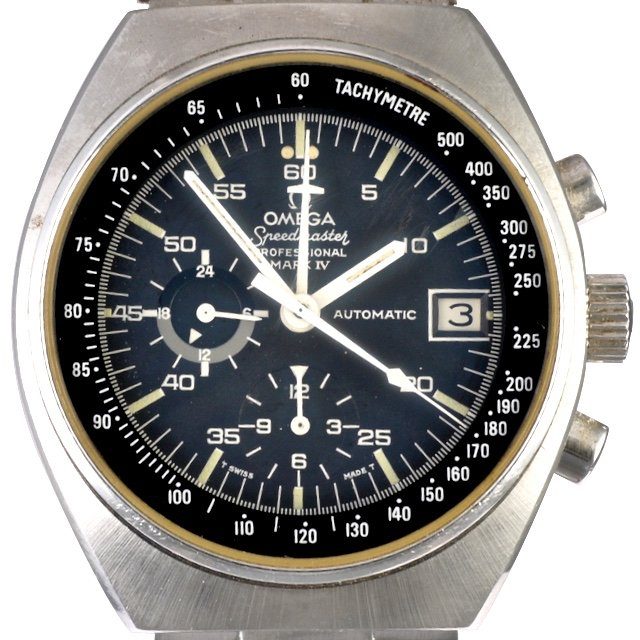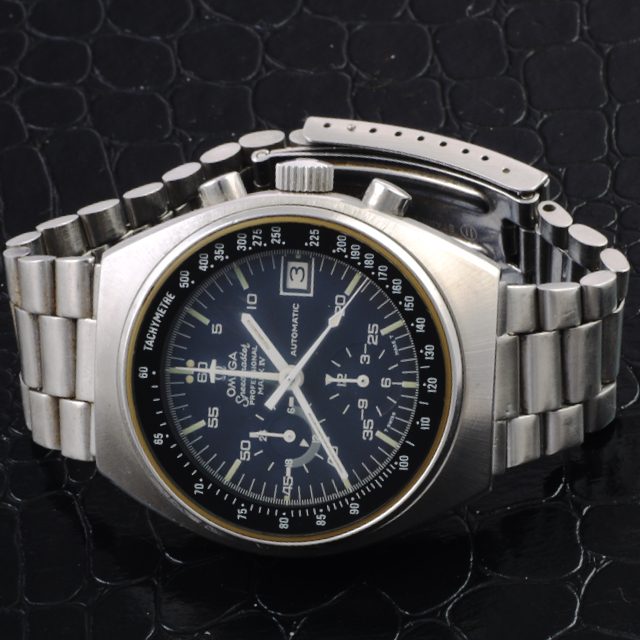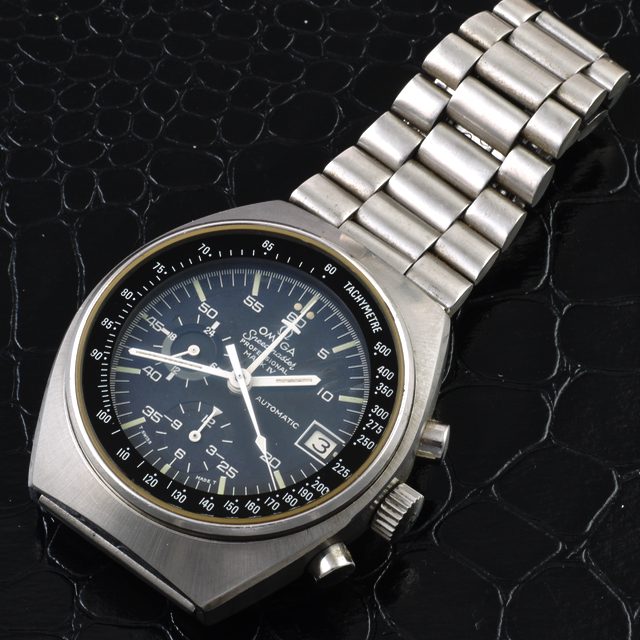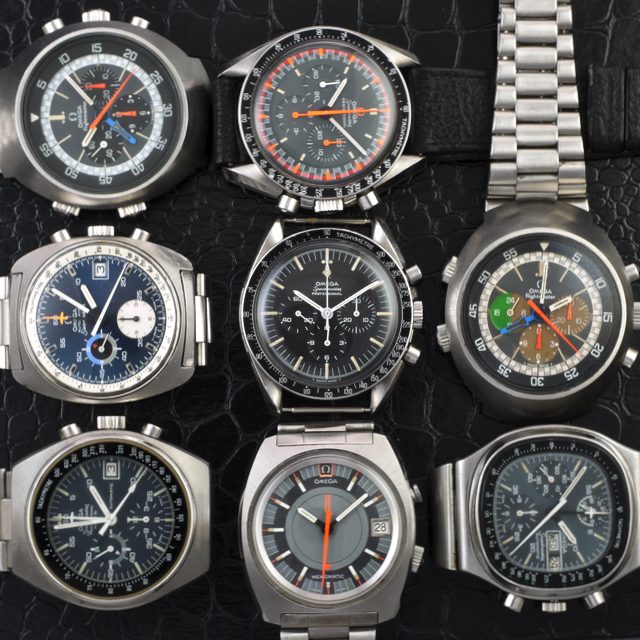



Omega Speedmaster Mark IV
India successfully tests an atomic device, becoming the world's sixth nuclear power1974 Omega Speedmaster Professional Mark IV ref. ST 176.0009.
Automatic movement cal. 1045, with large center chronograph seconds and minutes hands, 12 hour counter at 6 o’clock, continues small seconds hand and 24-hour indicator at 9 o’clock.
The cal. 1045 was a upgraded Chronometer version of the cal. 1040, developed by Raoul-Henri Erad and produced by Lemania.
The cal. 1040 is the first Omega automatic Chronograph caliber. It was developed by Raoul-Henri Erad and produced by Lemania; it is worth mentioning that its rotor is mounted in a ball-bearings.
Although an early automatic chronograph, the caliber 1040 was not the first automatic chronograph in the world: it was preceded by the Chrono-Matic and the el Primero which were the first commercial automatic Chrono calibers.
Albert Piguet, Lemania’s chronograph specialist, had already made an automatic Chronograph prototype in 46. Unfortunately, this revolutionary project was shelved at the time by Paul-Emile Brandt, who considered it superfluous.
Omega was founded in 1848 by Louis Brandt at the age of 23. The brand’s reputation grew fast and in 1895 the watches achieved a precision of 30 seconds a day.
By the turn of the 19th century Omega was one of Switzerland’s largest watch companies with 240,000 watches produced annually and employing 800 people.
Omega made its debut in sports during the Gordon Bennett international ballooning Cup in 1917; since then Omega has gone on to be the official timekeeper at 21 Olympic Games.
In 1936 Omega set the remarkable World precision record of 97.8 points at the Kew-Teddington observatory in England.
In 1957, with motorsport in mind, Omega launched the Speedmaster, which in 1965 was chosen by NASA as its official chronometer in Space. Four years later the Moonwatch was the first watch to be worn on the Moon, when on 21st July 1969 Neil Armstrong made his giant leap for mankind. Currently Omega belongs to the Swatch Group.
